Geoscience Reference
In-Depth Information
1
0.9
test examples
0.8
range examples
0.7
0.6
0.5
left−shifted
Gaussian mixture
0.4
0.3
0.2
0.1
0
−3
−2
−1
0
1
2
3
x
(a) experiment design
−
2
.
5
−
2
−
1
.
5
−
1
−
0
.
5
0
0
.
5
1
1
.
5
2
2
.
5
(b) some stimuli and their
x
values
Figure 7.2:
The 1D binary classification problem of ZRQK.
Following this intuition, the ZRQK study used the procedure below to study human behaviors.
Each stimulus is a complex shape parametrized by a 1-dimensional feature
x
. Figure 7.2(b) shows a
few shapes and their x values. Each human subject receives input in the following order:
1. The labeled data: 10 positive labeled instances at
x
=
1 and 10 negative labeled instances at
x
1. These 20 trials appear in a different random order for each participant. The repetition
of the same two stimuli each ensures quick learning. For these first 20 stimuli, the subjects
received an affirmative sound if they made the correct classification, or a warning sound if they
were wrong. There was no audio feedback for the remaining stimuli.
=−
2. Test-1: 21 evenly spaced unlabeled examples
x
0
.
8
,...,
1, appearing in a dif-
ferent random order for each participant. They are used to test the learned decision boundary
after seeing the above labeled data.
=−
1
,
−
0
.
9
,
−
3. The unlabeled data: 690 randomly sampled unlabeled instances from the blue bimodal dis-
tribution. Importantly, the two modes are shifted away from the labeled instances at
x
=−
1
and
x
1, so that the labeled instances are not prototypical examples of the classes. For “L-
subjects” the two modes are shifted to the left; for “R-subjects” they are shifted to the right.
In addition, three batches of 21 “range instances” evenly spaced in the interval
=
are
mixed in. The range instances ensure that the unlabeled data for both left-shifted and right-
[−
2
.
5
,
2
.
5
]
































































